Who Was The Sapa Inca?
A. Sutherland - AncientPages.com - Who was the Sapa Inca?
The ruler of the Inca people, known as the Sapa Inca, held a unique and significant position. The "only emperor" title in Quechua signifies his unparalleled role as the sole Inca ruler.
Painting of Manco Cápac - Sapa Inca of the Kingdom of Cusco - 18th century Cusco School. Unknown source - Public Domain
Why did he play such an essential role in the Inca Empire?
The Inca conquest of the northern kingdom of Chimú (Chimor), which began circa 1470, had a significant and far-reaching impact on the Inca’s government and society. The Sapa Inca's political power significantly increased, altering the balance of power in the region.
This conquest focused on the coastal regions of northern Peru and Ecuador and was of great importance in Inca history. The assimilation of Chimú territories and cultural practices into the Inca Empire largely modified and strengthened Inca society.
Chimu was a remarkable society, and the splendor and wealth of the lord of this northern kingdom, his nobles, and the court were impressive. The wealth displayed by the Chimu elites was admired, and the Inca desired to emulate everything that could strengthen their empire.
Due to his divine lineage, the Sapa Inca was revered as a sacred figure during his lifetime. As a direct descendant of the solar deity Inti, he was considered one of his progeny.
Inca Roca, Sixth Sapa Inca, 1 of 14 Portraits of Inca Kings. Online collection of Brooklyn Museum. Public Domain
A Sapa Inca was polygamous, meaning he could have many wives. He wore a hat made of gold and feathers, clothes covered in jewels, and huge gold earrings. He wore an outfit once; after that, it was burned. The deceased Sapa Inca was mummified and kept in his palace.
His divine connection was significant during his reign and after his death. His mummified remains became one of the most sacred objects in the empire, leading to the creation of the imperial ancestor cult, which revered him as a divine entity.
The Sapa Inca, who held unquestionable authority over the Inca Empire, occupied the top of the social hierarchy. His rule extended to all aspects of governance and ownership, symbolizing his complete control over the empire.
While he held the position of commander-in-chief and was theoretically the principal field general, his direct involvement in military operations decreased as the empire expanded. Instead, he delegated field command to generals and officers, often individuals with close familial ties to him. This transition in his military role evolved to respond to the growing complexity of the empire's military affairs.
The Sapa Inca And Social Order
The Incan social order was well-organized. The empire's social hierarchy system was strict, one can say, even harsh, but it made for a stable society. People knew what was expected.
Portrait of Atahualpa, the last Inca Emperor. Ethnological Museum of Berlin, Germany - Public Domain
Inca’s military personnel included generals, officers, and ethnic leaders of combat units. The Sapa Inca had a personal guard known as the ‘orejones’ (in Spanish: "large ears.") The Orejones elite group was primarily composed of members from the Cuzco aristocracy.
As the ‘only emperor’ or ‘unique Inca,’ he had divine right over the people in all the villages in the empire. He was at the top of the social order. Below him were the four Prefects (Apu), each administering a quarter of the empire. They made up the Sapa Inca’s Supreme Council. Under them were the provincial governors, the Tocricoc Apu, who lived in the outlying capitals and acted as government administrators and judges. Then came native rulers of tribes or villages, the so-called ‘curacao,’ and the ‘canyon’ (leaders of a district or community within a town).
He was both a religious and political figure and according to the Incas, politics, and religion were intertwined. The Inca considered their ruler, the Sapa Inca, divine. Some reportedly had up to a hundred children. Upon death, a favored son succeeded him, not necessarily the eldest.
Statue of the ninth Sapa Inca, Pachacutiq, Machupicchu Pueblo in Peru. Image credit. Elemaki - CC BY 2.5
The first Sapa Inca was Manco Capac. The son of the sun god Inti, Manco Capac established the Inca dynasty and assumed the title of Capac, which may be interpreted as "King" in modern terms. While he remains a semi-mythical figure whose actual time period cannot be clearly pinpointed, he is regarded as an Inca hero and many ancient legends connect Manco Cápac to the foundation of Cuzco.
Interestingly, Inca Roca, the sixth monarch in the Inca lineage, is believed to have been the first ruler to officially adopt the title of Sapa Inca, which translates to "Emperor."
The ninth Sapa Inca, Pachacuti (1418–1471/1472), defeated the Chanca (Chanka), a Quechua ethnic people living in the regions of Ayacucho, Apurímac, and Lamas of Peru. This victory made the Inca Empire powerful during his reign.
The last effective Sapa Inca of the Inca Empire was Atahualpa executed by Francisco Pizarro, a Spanish conquistador who led an expedition that conquered the Inca Empire. However, several successors later claimed the title.
Written by – A. Sutherland - AncientPages.com Senior Staff Writer
Copyright © AncientPages.com All rights reserved. This material may not be published, broadcast, rewritten or redistributed in whole or part without thexpress written permission of AncientPages.com
Expand for referencesReferences:
de Gamboa, Pedro Sarmiento. ‘History of the Incas’
Hanke L. History of Latin American Civilization Vol.1
More From Ancient Pages
-
 On This Day In History: Howard Carter Discovered King Tut’s Tomb In The Valley Of The Kings – On Nov 4, 1922
News | Nov 4, 2016
On This Day In History: Howard Carter Discovered King Tut’s Tomb In The Valley Of The Kings – On Nov 4, 1922
News | Nov 4, 2016 -
 Major Archaeological Discovery Of A 7,000-Year-Old Settlement In Miami – But Its Future Is In Danger
Archaeology | Feb 10, 2023
Major Archaeological Discovery Of A 7,000-Year-Old Settlement In Miami – But Its Future Is In Danger
Archaeology | Feb 10, 2023 -
 Experts Restore Ceremonial Boat Of Pharaoh Cheops At On-Site Antiquities Laboratory
Archaeology | Mar 30, 2017
Experts Restore Ceremonial Boat Of Pharaoh Cheops At On-Site Antiquities Laboratory
Archaeology | Mar 30, 2017 -
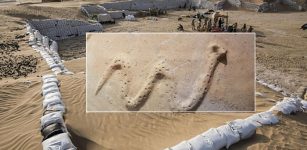 3,000-Year-Old Recycling Center In What Is Now Dubai – Discovered
Archaeology | Jan 8, 2020
3,000-Year-Old Recycling Center In What Is Now Dubai – Discovered
Archaeology | Jan 8, 2020 -
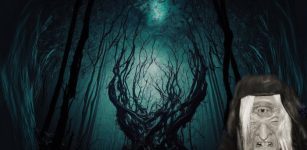 Likho (Licho): Puzzling And Persistent Demon Of Mischief In Slavic Mythology
Featured Stories | Dec 18, 2016
Likho (Licho): Puzzling And Persistent Demon Of Mischief In Slavic Mythology
Featured Stories | Dec 18, 2016 -
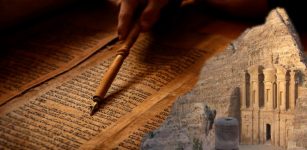 Selah – Mysterious Biblical Word Of Unknown Meaning
Biblical Mysteries | Jan 5, 2018
Selah – Mysterious Biblical Word Of Unknown Meaning
Biblical Mysteries | Jan 5, 2018 -
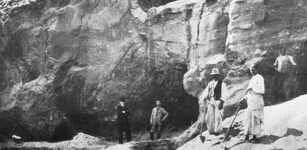 Neanderthals Decorated Their Caves With Rocks 130,000 Years Ago – Find At Krapina Site Reveals
Archaeology | Jan 19, 2017
Neanderthals Decorated Their Caves With Rocks 130,000 Years Ago – Find At Krapina Site Reveals
Archaeology | Jan 19, 2017 -
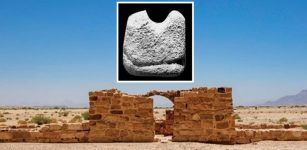 World’s Oldest Chess Piece Discovered At Humayma In Jordan?
Archaeology | Nov 26, 2019
World’s Oldest Chess Piece Discovered At Humayma In Jordan?
Archaeology | Nov 26, 2019 -
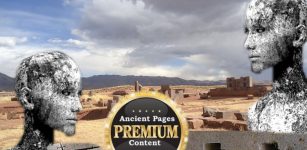 Ignored Archaeological Discovery At Puma Punku That Could Re-Write Ancient History
Ancient Mysteries | May 11, 2020
Ignored Archaeological Discovery At Puma Punku That Could Re-Write Ancient History
Ancient Mysteries | May 11, 2020 -
 Fairies Weren’t Always Cute – They Used To Drink Human Blood And Kidnap Children
Featured Stories | Oct 15, 2022
Fairies Weren’t Always Cute – They Used To Drink Human Blood And Kidnap Children
Featured Stories | Oct 15, 2022 -
 Real-Life Excalibur Found Underwater In Bosnia – Medieval Sword In Stone Pulled Out
Archaeology | Oct 31, 2019
Real-Life Excalibur Found Underwater In Bosnia – Medieval Sword In Stone Pulled Out
Archaeology | Oct 31, 2019 -
 Archaeologists And Historians Argue With Geneticists Over Controversial Viking DNA Study
Archaeology | Feb 24, 2017
Archaeologists And Historians Argue With Geneticists Over Controversial Viking DNA Study
Archaeology | Feb 24, 2017 -
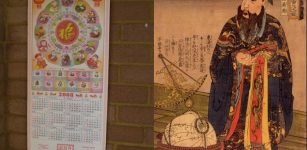 Ancient Chinese Tai Chu Calendar Was Defined By Emperor Han Wu
Ancient History Facts | Jun 3, 2019
Ancient Chinese Tai Chu Calendar Was Defined By Emperor Han Wu
Ancient History Facts | Jun 3, 2019 -
 Newly Discovered Papyrus Reveals An Intriguing And Gripping Criminal Case From The Roman Empire
Archaeology | Jan 29, 2025
Newly Discovered Papyrus Reveals An Intriguing And Gripping Criminal Case From The Roman Empire
Archaeology | Jan 29, 2025 -
 William Marshal Earl Of Pembroke: Master Of Tournaments And Best Example Of Medieval Chivalry And Knighthood
Featured Stories | Jul 7, 2017
William Marshal Earl Of Pembroke: Master Of Tournaments And Best Example Of Medieval Chivalry And Knighthood
Featured Stories | Jul 7, 2017 -
 Roman Forum (‘Forum Romanum’) – The Heart Of Ancient Rome
Featured Stories | Aug 5, 2019
Roman Forum (‘Forum Romanum’) – The Heart Of Ancient Rome
Featured Stories | Aug 5, 2019 -
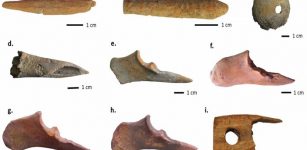 More Sophisticated Manufacturing In The Bronze Age – New Evidence
Archaeology | Jun 27, 2020
More Sophisticated Manufacturing In The Bronze Age – New Evidence
Archaeology | Jun 27, 2020 -
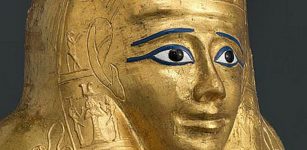 Gilded Coffin Of Nedjemankh, Priest Of Ram-God Heryshef Recovered By Egyptian Authorities
Archaeology | Mar 12, 2019
Gilded Coffin Of Nedjemankh, Priest Of Ram-God Heryshef Recovered By Egyptian Authorities
Archaeology | Mar 12, 2019 -
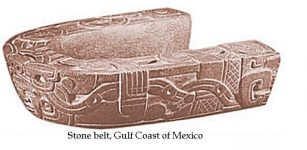 Millennia Old Ceremonial Stone Belt And Maya Pok-A-Tok Ball Game
Ancient Traditions And Customs | Nov 28, 2017
Millennia Old Ceremonial Stone Belt And Maya Pok-A-Tok Ball Game
Ancient Traditions And Customs | Nov 28, 2017 -
 The Boomerang Was Used 20,000 Years Ago By Stone Age People
Ancient History Facts | Sep 28, 2018
The Boomerang Was Used 20,000 Years Ago By Stone Age People
Ancient History Facts | Sep 28, 2018




